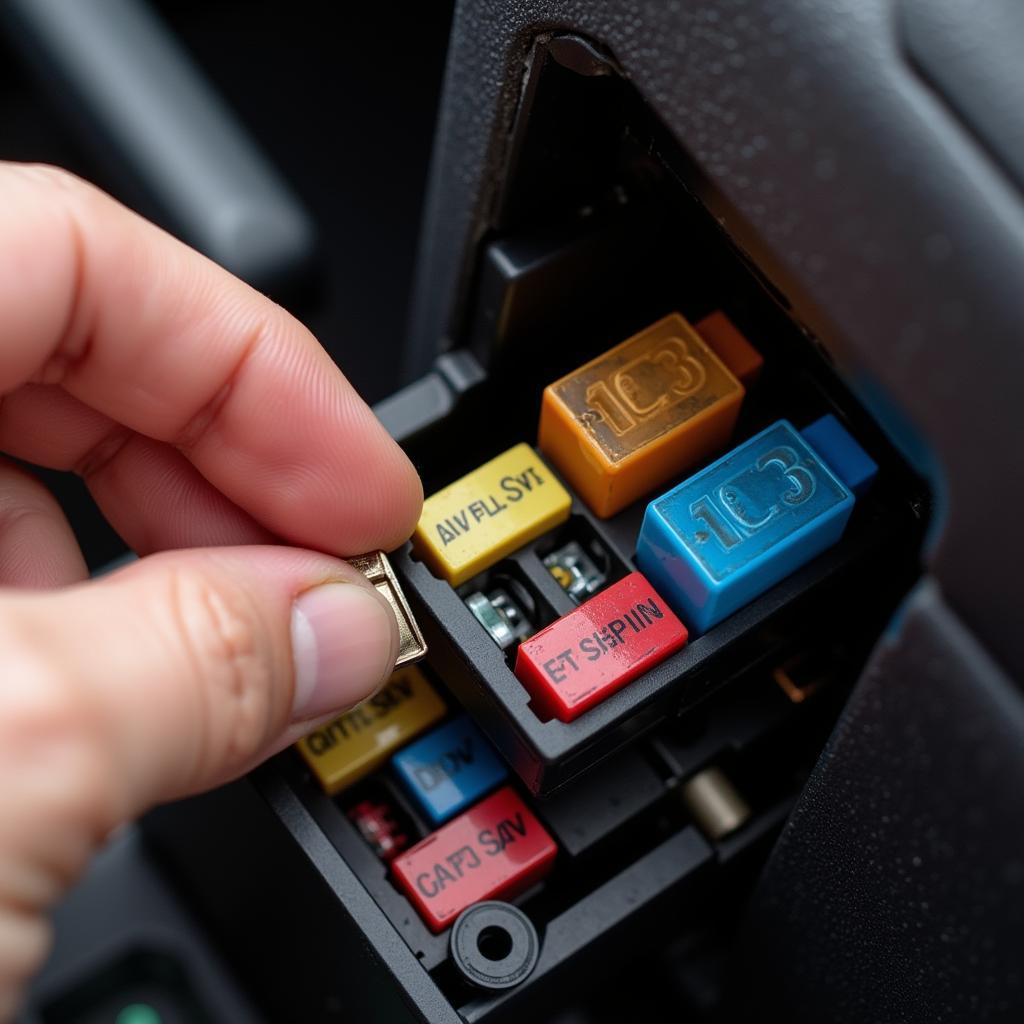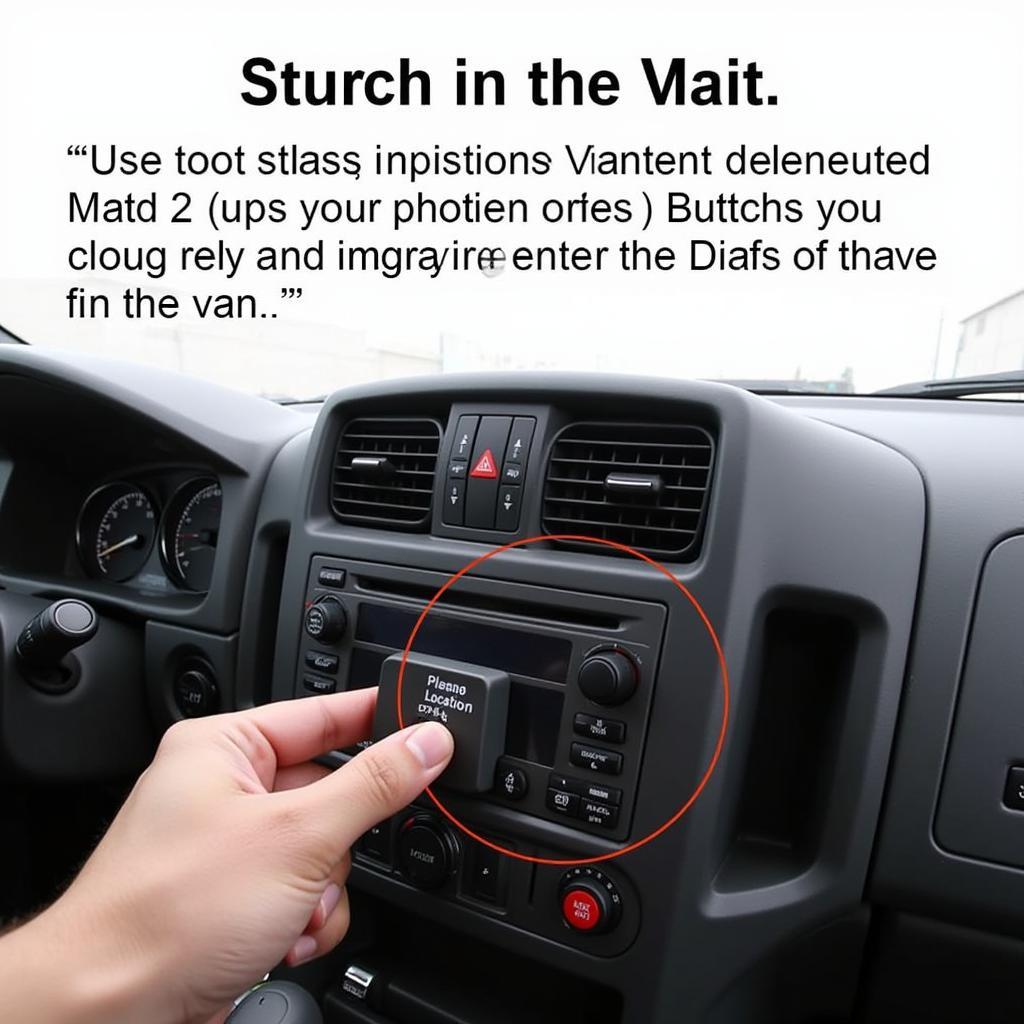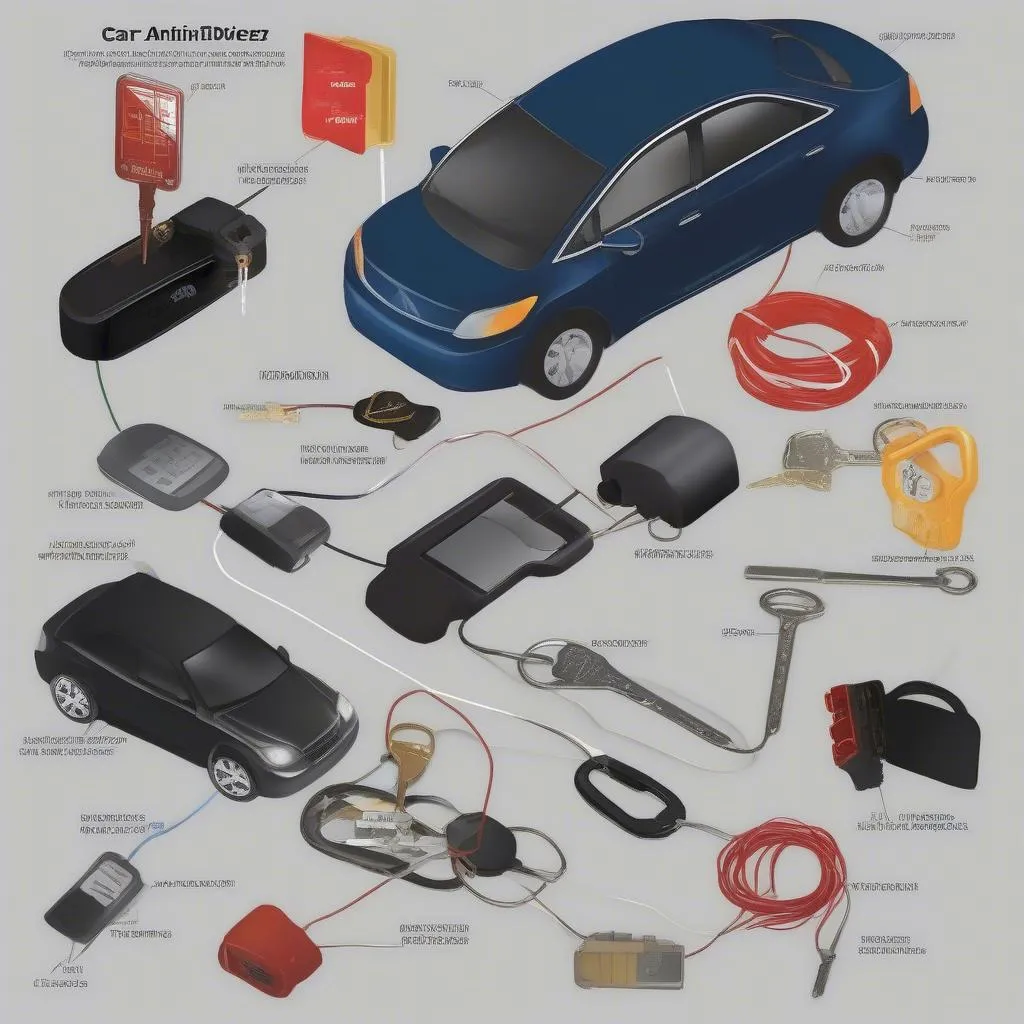A dead car battery is a frustrating experience. One of the most common culprits is excessive parasitic draw, also known as a “key-off” drain. Learning how to test amp draw on car battery will help you pinpoint the source of the drain and get your car back on the road. This guide provides a step-by-step approach to performing this essential test, even for beginners.
 Testing Car Battery Amp Draw with Multimeter
Testing Car Battery Amp Draw with Multimeter
One of the first signs of a parasitic draw is a new car battery drained overnight. This is often caused by a faulty component or accessory continuing to draw power even after the car is turned off. Knowing how to check for parasitic draw is crucial for maintaining your car’s electrical system and avoiding unexpected breakdowns.
Understanding the Importance of a Car Battery Amp Draw Test
A car battery amp draw test, also known as a parasitic draw test, is vital for diagnosing electrical issues that drain your battery. It measures the current flowing out of your battery when the car is off, identifying any components consuming power unnecessarily. This knowledge allows you to fix the problem and prevent future battery drain issues.
“Regularly testing your car battery’s amp draw is a preventative measure that can save you from unexpected headaches and costly repairs down the road,” says automotive electrical expert, Michael Stevens, ASE Certified Master Technician.
What Tools Do I Need to Test Amp Draw?
You’ll need a few essential tools for this test:
- Digital Multimeter: This is the primary tool for measuring current. Ensure it’s set to measure DC amps.
- Test Leads: These connect the multimeter to the battery terminals.
- Protective Gloves and Eyewear: Safety first! Always protect yourself when working with car batteries.
- Owner’s Manual: This provides specific information about your car’s electrical system.
Step-by-Step Guide on How to Check for Current Draw on Car Battery
checking for current draw on car battery
Follow these steps to perform the test accurately:
- Prepare the Car: Park the car on a level surface, turn off the ignition, and remove the key. Close all doors, lights, and accessories.
- Access the Battery: Open the hood and locate the car battery.
- Connect the Multimeter: Disconnect the negative battery cable. Connect the red lead of the multimeter to the negative battery terminal and the black lead to the negative battery cable.
- Set the Multimeter: Set the multimeter to the appropriate DC amp range, usually 10A or 20A initially. You may need to adjust the range down later for a more precise reading.
- Observe the Reading: The multimeter will display the current draw. A healthy reading should be very low, typically less than 50 milliamps (0.05 amps). A higher reading indicates a parasitic draw.
- Identify the Culprit: If the reading is high, start systematically removing fuses one at a time while observing the multimeter. A significant drop in current indicates the circuit containing the faulty component. Consult your owner’s manual to identify the components on that circuit.
 Removing Car Fuse for Amp Draw Test
Removing Car Fuse for Amp Draw Test
Interpreting the Results of Your Test Amp Draw on Car Battery
Once you’ve completed the test, understanding the readings is crucial. A low amp draw indicates a healthy electrical system. However, a high reading requires further investigation.
Common Causes of High Amp Draw
Several issues can cause excessive amp draw:
- Faulty Alternator: Although less common, a failing alternator can drain the battery.
- Interior Lights: A stuck dome light or glove box light can draw significant power.
- Faulty Door Switches: A malfunctioning door switch can trick the car into thinking a door is open, keeping interior lights or other systems active.
- Aftermarket Accessories: Improperly installed or faulty aftermarket accessories, such as stereos or alarms, can cause a parasitic drain.
- Bad Relays: A stuck relay can keep a circuit energized, draining the battery.
“One common issue we see is a faulty glove box light switch,” explains automotive electrician, Sarah Chen, “It’s a small component that can cause a big problem.”
Troubleshooting and Fixing High Amp Draw Issues
Once you’ve identified the circuit causing the high amp draw, pinpoint the specific component. Consult your owner’s manual or online resources for wiring diagrams and troubleshooting guides. If you’re not comfortable working with car electrical systems, seek professional help.
new car battery drained overnight
For example, a Touran battery drain problem might require specific diagnostic procedures. It’s always best to consult resources tailored to your specific car model.
Conclusion: Mastering the Art of the Car Battery Amp Draw Test
Testing the amp draw on your car battery is a crucial skill for any car owner. This guide equips you with the knowledge and steps to diagnose and fix parasitic draw issues, saving you time and money. By proactively monitoring your car’s electrical system, you can ensure reliable starts and prevent unexpected breakdowns. Regularly performing a test amp draw on car battery is a simple yet effective way to keep your vehicle running smoothly.



